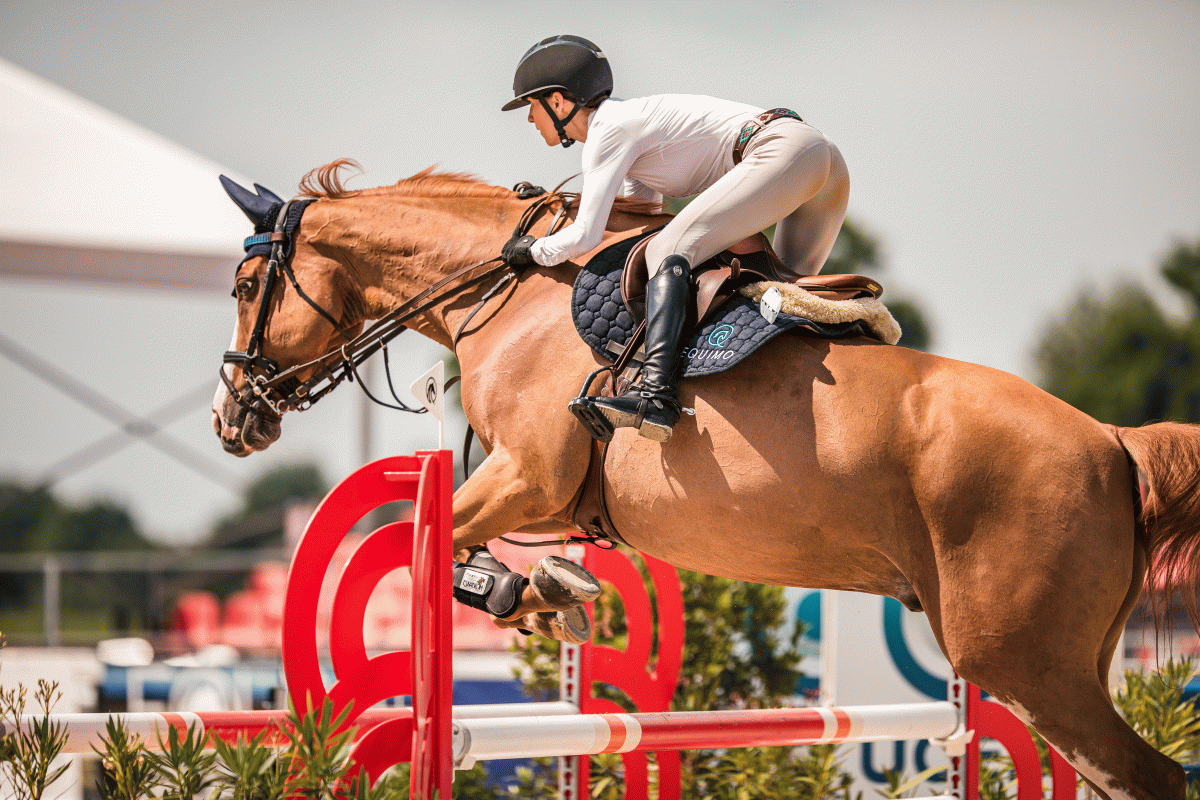
While the equestrian world has been shaken by a recent affair concerning forbidden techniques, there are many ways to naturally (and painlessly) improve your horse’s jumping technique. Let’s look at a few!
Článek v češtině si můžete přečíst ZDE.
1. Your Jumping Position
Many world-class trainers and riders agree on one thing: the best thing you can do to help your horse jump better is to work on yourself.
2. Gridwork
Gridwork and gymnastic lines provide measured distances, and therefore, a good take-off point for your horse. Taking off from the right spot gives your horse enough time to focus on their body and legs, improving their jumping technique. On top of that, gridwork brings a regular tempo into your session, which leads us to:
3. Regular Tempo
If you speed up here and slow down there during a course, the result will be messy and unbalanced. Aim to maintain the same tempo throughout the course to provide your horse with good take-off opportunities. The ideal tempo should be active, forward, but not too forward, as your horse should maintain hind-leg engagement and self-carriage.
If you struggle to keep the same pace, try our Equitronome – this feature of the EQUIMO app plays the sound of your desired tempo while you learn to ride without changing the pace!
4. Wide Oxers
Although verticals can work miracles, wide oxers make your horse use their topline and all the parts of their body. Our four-legged partners learn to stretch over the fences and jump round. Be mindful of the fact that the oxers don’t need to be big! Even small oxers wide enough are the charm.